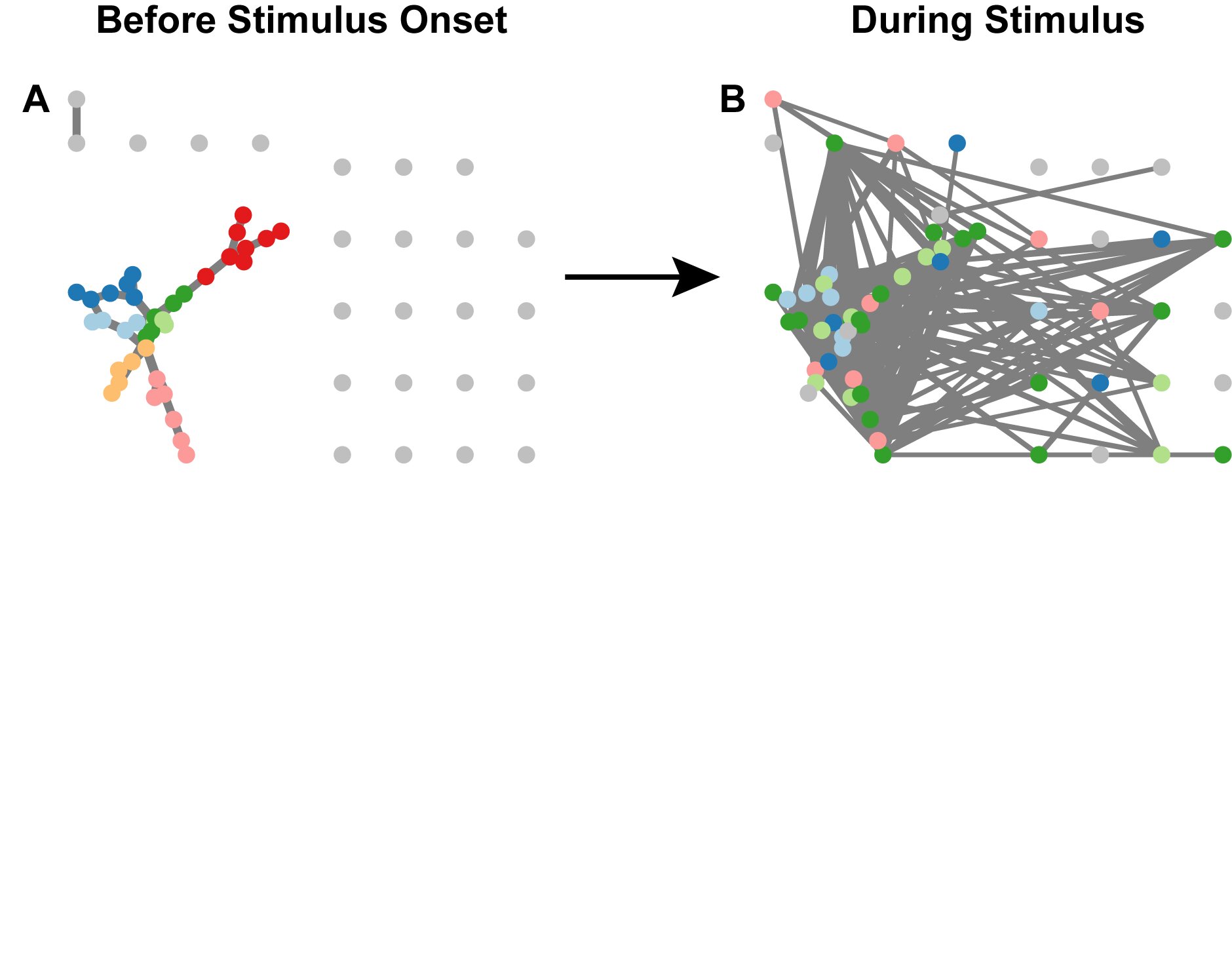
The worm's brain functions differently when it tastes salt. The connections between the circles are called synapses. The scientists used graph theory to group some neurons into modules. The number of modules was reduced from 7 to 5. This shows that the animal's brain is important when it tastes salt. Credit: Salk Institute.
It sounds like a party trick, but scientists can now look at the brain activity of a tiny worm and tell you which chemical the animal smelled a few seconds before. The findings of a new study, led by a professor at the Salk Institute, are more than just a novelty; they help the scientists better understand how the brain functions and integrates information.
"We found some unexpected things when we started looking at the effect of sensory stimuli on individual cells and connections within the worms' brains," says Chalasani, member of the Molecular Neurobiology Laboratory and senior author of the new work.
The brain processes information from the outside world. The worm Caenorhabditis elegans has only 302 neurons, which is less than the 86 billion brain cells in a living human. In a simple animal like C. elegans, researchers can monitor individual neurons as the animal carries out its actions. Humans and mice are not currently able to achieve that level of resolution.
The team set out to study how the C. elegans brain reacts to smelling five different chemicals. C. elegans can differentiate these chemicals, which are similar to almond, buttered popcorn, banana, cheese, and salt, according to previous studies. While researchers know the identities of a small group of sensory neurons that sense the stimuli, they are more interested in how the rest of the brain reacts.
The researchers engineered C. elegans so that each of their 302 neurons had a fluorescent sensor. They watched as they exposed 48 different worms to different chemicals. 50 or 60 neurons are activated in response to each chemical.
Chalasani and his colleagues couldn't differentiate between the different chemicals by looking at the basic properties of the datasets. They used a mathematical approach called graph theory to analyze the collective interactions between pairs of cells.
When C. elegans was exposed to salt, there was a burst of activity in one set of neurons, but then about 30 second later, triplets of other neurons began to coordinate their activities. When a worm was exposed to salt, the researchers were able to identify the triplets by their brain patterns.
"C. elegans seems to have attached a high value to salt, using a completely different circuit configuration in the brain to respond." It might be because salt is a food for the worm.
The researchers used a machine-learning algorithm to find differences in how the brain responded to different chemicals. The neural response to salt and benzaldehyde is different from the other three chemicals.
We're still only getting a partial answer as to how the brain discriminates, but whatever analysis we've done, it's a start.
The way the team approached the study was to look at the brain's network-wide response to a stimuli, rather than just focusing on a small group of sensory neurons.
The ultimate goal of the researchers is not to read the minds of worms, but to gain a deeper understanding of how the brain works, and what happens when it goes awry in certain conditions.
The other authors of the new study were Saket Navlakha of Cold Spring Harbor Laboratory.
The Neural network features distinguish chemosensory stimuli in Caenorhabditis elegans. There is a journal called "PCbi. 1009591."
The journal contains information about Computational Biology.
Scientists use machine learning to predict smells based on brain activity in worms.
The document is copyrighted. Any fair dealing for the purpose of private study or research cannot be reproduced without written permission. The content is not intended to be used for anything other than information purposes.
